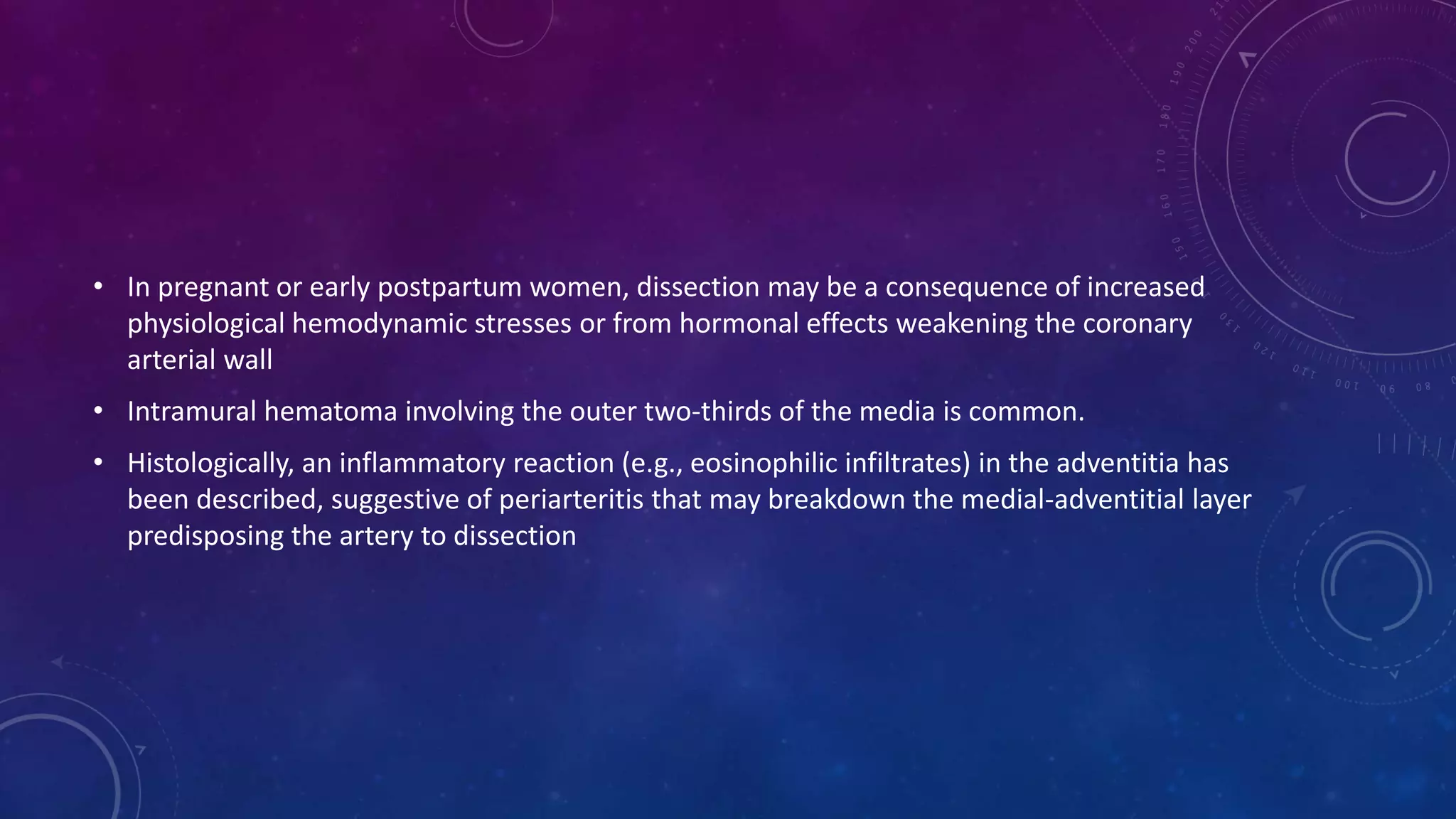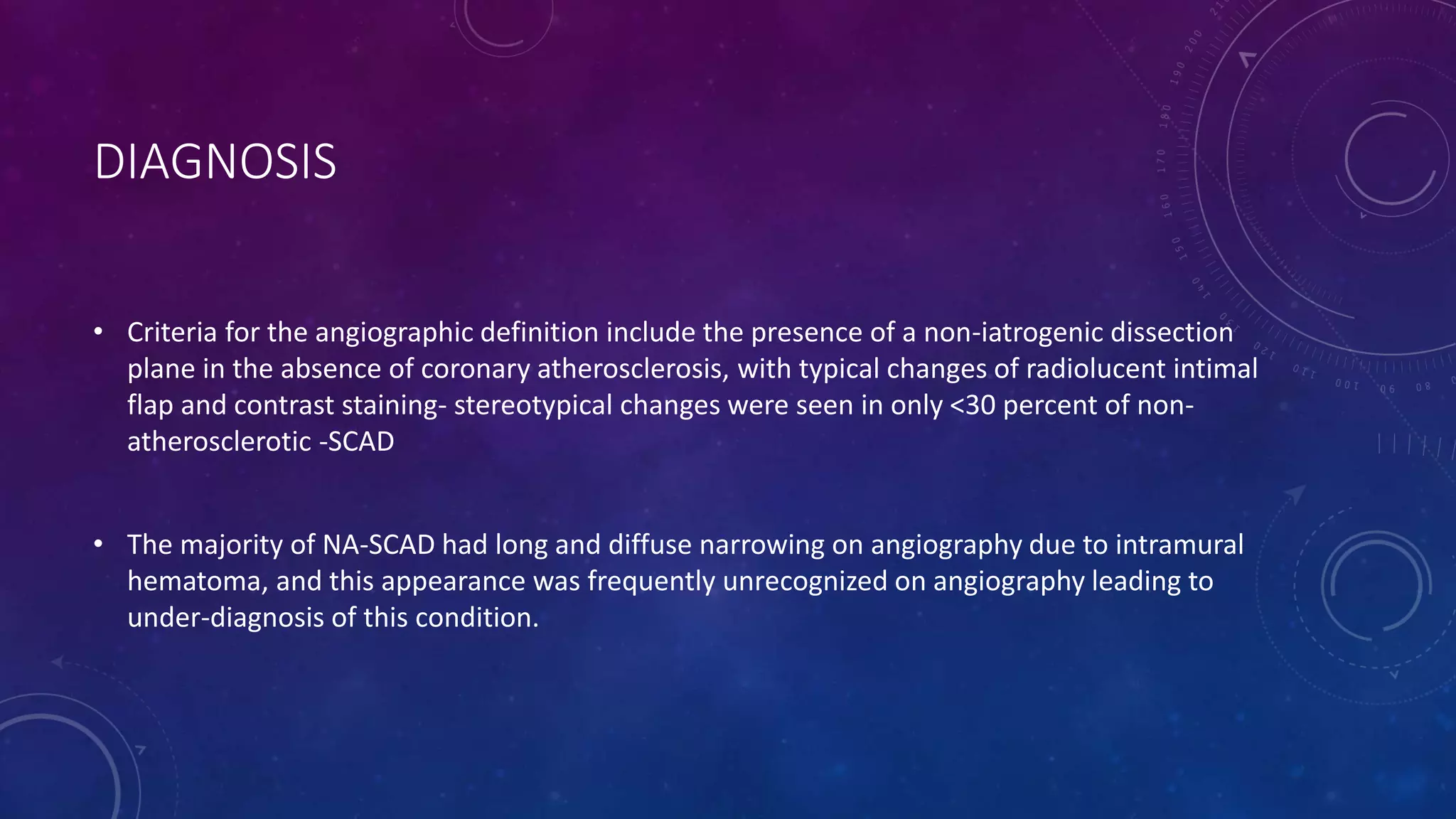Spontaneous coronary artery dissection (SCAD) is a rare cause of acute myocardial infarction characterized by a non-traumatic separation of the coronary arterial wall. It most commonly affects younger women and the left anterior descending artery. SCAD results from an intimal tear or bleeding of vasa vasorum that leads to the formation of a false lumen filled with blood. This can cause the artery to narrow and restrict blood flow. SCAD is increasingly recognized and can be caused by conditions affecting connective tissue or hormonal factors during pregnancy. Angiography is used to diagnose SCAD but findings may be subtle, with long diffuse narrowing being most common. Management involves conservative treatment but revascularization may be needed for ongoing ischemia





















